每年2月27日的深夜,傾流著一片淺橘燈光的寬敞凱達格蘭大道,總會被數個角錐圈隔起來,再被數頂白色帳篷綴上好幾枚奶油球,橫空降臨的舞台光束偶爾攪拌幾下躁動的心,讓青年們的理念和意志更充分混合、沉澱,準備隨著幾小時後的太陽一同飛升。
當晨曦在天空暈開來,除了是2月的最後一天,亦是青年們籌備一整年的「共生音樂節」即將拉開序幕。
音樂祭或音樂節在近幾年的臺灣愈加盛行,比如以地域性著名的「大港開唱」(高雄)、「浪人祭」(臺南)等,也有部分以舉辦方式的特色(如邊聽音樂祭邊露營、爬山),誘惑血液裡流淌著音符和節奏的人們匯聚。而「共生音樂節」早在2013年,由一群熱愛臺灣土地、關心臺灣社會脈動、亟欲推廣轉型正義與臺灣歷史記憶的熱血青年們創立,即使每年都固定在臺北舉辦,主打的卻不指向地域性,而是呼喚臺灣大眾一起拾起被遺忘的歷史,以釐清二二八事件真相為主軸,重新憶起臺灣近代曾發生的大規模國家暴力與不正義,並期許促成更大程度的相互理解和尊重。
「共生音樂節」每年的主標語,其實都努力反映臺灣社會當下的風潮轉變,以及臺灣青年對社會的想法及行動。以我參與籌備團隊期間的第七屆到第十屆(2019-2022)來說,從「眾聲喧嘩」、「不默而生」、「在場證明」到「時至今日」,就能略窺這幾年的臺灣政治社會縮影。而音樂節團隊每年皆會匯集相關的各領域人才――行政組、樂團組、論述組(第十屆改制分成展覽組、文學組、手冊組)、活動組等,合力打造屬於臺灣人的、能夠促成更多對話交流的各式場域。
實踐理念時,想當然會比單單談論還要難得多。
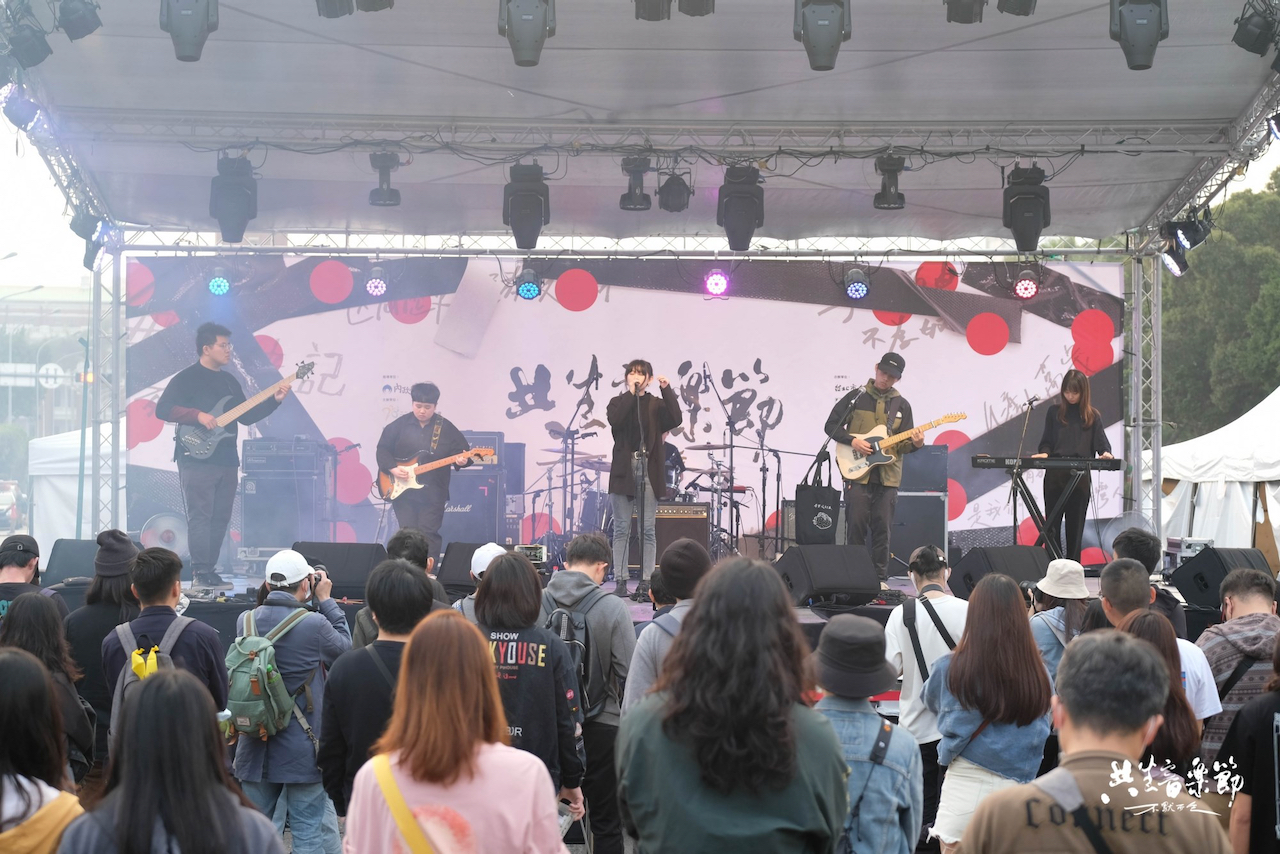 始於2013年,「共生音樂節」由一群熱愛臺灣土地、關心臺灣社會脈動、亟欲推廣轉型正義與臺灣歷史記憶的熱血青年們創立,藉此呼喚臺灣大眾一起拾起被遺忘的不義歷史。圖/台灣共生青年協會提供
始於2013年,「共生音樂節」由一群熱愛臺灣土地、關心臺灣社會脈動、亟欲推廣轉型正義與臺灣歷史記憶的熱血青年們創立,藉此呼喚臺灣大眾一起拾起被遺忘的不義歷史。圖/台灣共生青年協會提供
既然名為「音樂節」,重頭戲當然是每年在二二八和平紀念日當天,盛大展開的樂團演出,搭配現場展覽、人權攤位市集以及短講等活動。團隊裡有個不成文的都市傳說,是受邀至「共生音樂節」表演過的樂團,不久後都會開始走紅:諸如六、七年前在「共生音樂節」登台過的生祥樂隊、鄭宜農、美秀集團、老王樂隊。仔細觀察也會發現,「共生音樂節」不僅邀請將關愛臺灣之心融入音樂的演出團隊,在語言上亦廣納臺語、客語、原住民語等多元族群,畢竟回顧臺灣歷史與努力共創臺灣更好的未來,這塊土地上的任一族群,都不能少。
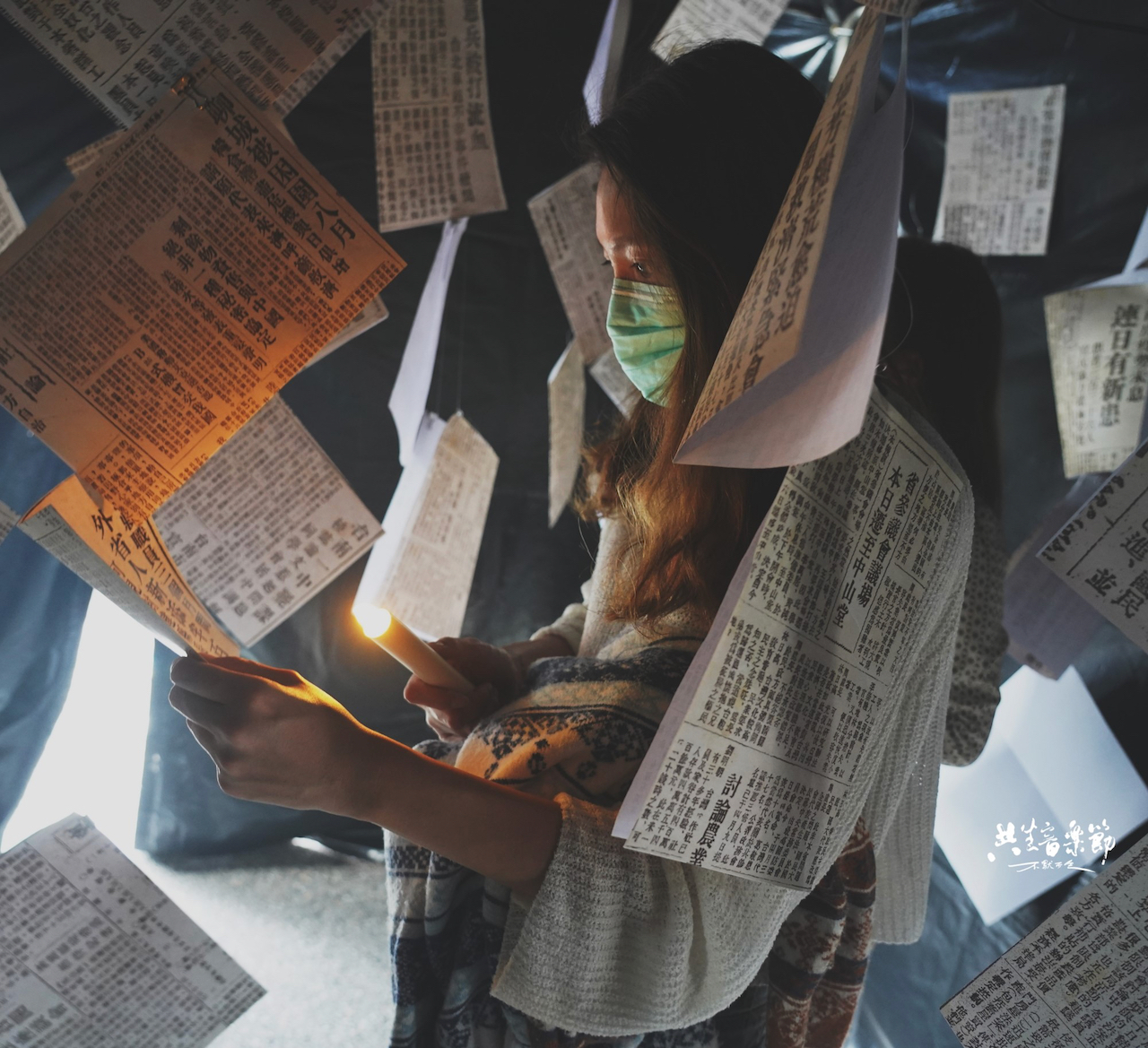
然而也會遭遇邀團願望清單無法在二二八當天實現的情況,既然在一年的籌備期間,同時會陸續舉辦議題講座、地景小旅行等活動,那麼在音樂節前先籌辦較小型的「音樂專場」也不為過。例如第八屆樂團組夥伴精心策劃的「漫聲之林」系列專場――當你抵達小地方展演空間,沿著階梯潛入地下之際,一抬頭便是被一張張垂懸的紙條包圍。你邊潛降邊穿梭,你認出那是來自威權時代受難者的遺書,可能是他們掙扎著發出的最後聲音、可能是留給後世的最後囈語。
無論是感覺莓果樂團在悠揚仿若悲鳴的長長前奏,悠緩而沉痛的傾吐高一生受難的故事,抑或聽眾們和吳志寧合唱〈全心全意愛你〉,念想著大大世界中的小小島嶼,似乎正一同去拾起某些在歷史壓迫中遺落的聲音:「若沒有耳朵聽見,那兒就沒有聲音。被聆聽後的傷,才能逐漸癒合。」
除了聽覺的激盪與共振,「共生音樂節」也透過視覺媒介――刊物、展覽的圖文等――呈現被時光緩緩撥開厚厚灰塵的歷史真相,以及青年世代相應的反思和行動。每年的固定班底是,對應該年主標語規劃主軸的音樂節現場展覽,受到疫情侵襲的這兩年,團隊也嘗試轉型製作了網頁版的線上展(第九屆)、互動媒介更多的Gather Town十年回顧線上展(第十屆)。第八屆更曾經出現靈光乍現的「暗房」展覽企劃。
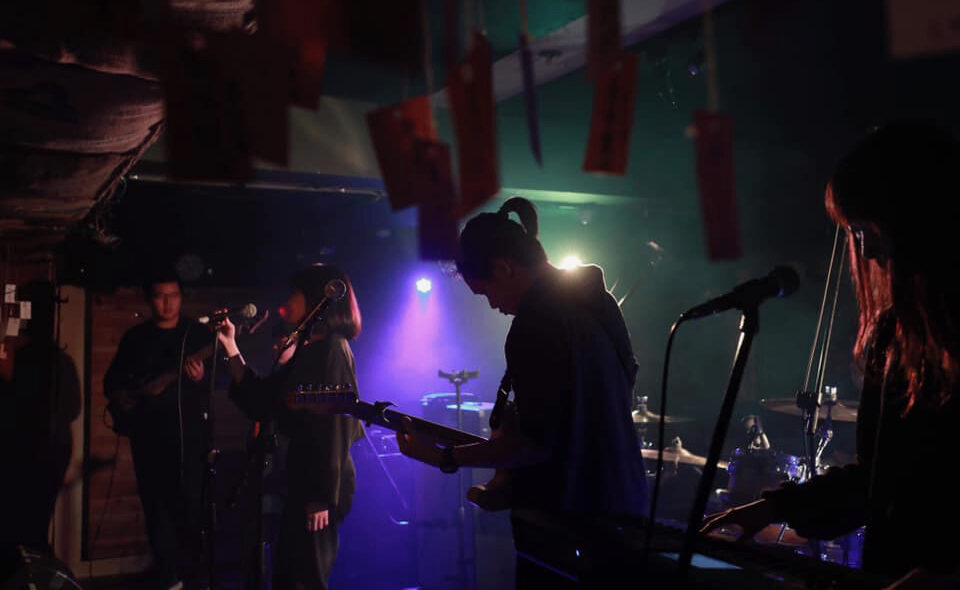 第八屆「共生音樂節:不默而生」中,樂團組精心策劃的「漫聲之林」系列專場。圖/台灣共生青年協會提供
第八屆「共生音樂節:不默而生」中,樂團組精心策劃的「漫聲之林」系列專場。圖/台灣共生青年協會提供
 第十屆「共生音樂節:時至今日」的Gather Town十年回顧線上展。圖/台灣共生青年協會提供
第十屆「共生音樂節:時至今日」的Gather Town十年回顧線上展。圖/台灣共生青年協會提供
原先漫長的凱達格蘭大道,在二二八時會使佔據頭尾兩端的現場展覽與主舞台之間,隔出一段較為空曠、供參與者走逛的場域,忽然在第八屆隆起了長長一條全黑的小山脈。只有一端有鑽入的開口,用黑布緊實地密封是為了在白天仍能看清山體裡的時空隧道光景:這條綿延的「暗房」分為三節,一走進第一節會被與人事線等高的垂掛報章們夾擊,你必須舉起手中的蠟燭燈,方能細看前行的路、周遭文字氤氳的社會氛圍,象徵的是1945年到1947年二二八爆發前,滿溢緊張與壓迫感的社會氛圍;踏入第二節前,廣播音效會先流進耳腔告訴你:來到二二八事件的歷程中了,這次遮掩你視線的是重重煙霧,偶爾刺眼的強光閃現,除了讓你稍微清楚辨認1940、50年代的收音機和其他老舊物件,更多的是令你從體內湧現恍若置身當場的驚懼,一旁覆上版畫風格的燈箱,則能看到事件轉折的各種場面,彷彿你一步步向前,也捲動著推進事件情境的輸送帶;最後,是事發後的種種追悼,你可以在掛滿三面黑牆的受難者名單、座落其中的百合花之間沉靜地哀悼,或者翻閱桌上的事件研究史料、紀念刊物,並且在留言冊印下你或漸漸沉澱、或仍波濤洶湧的心緒。
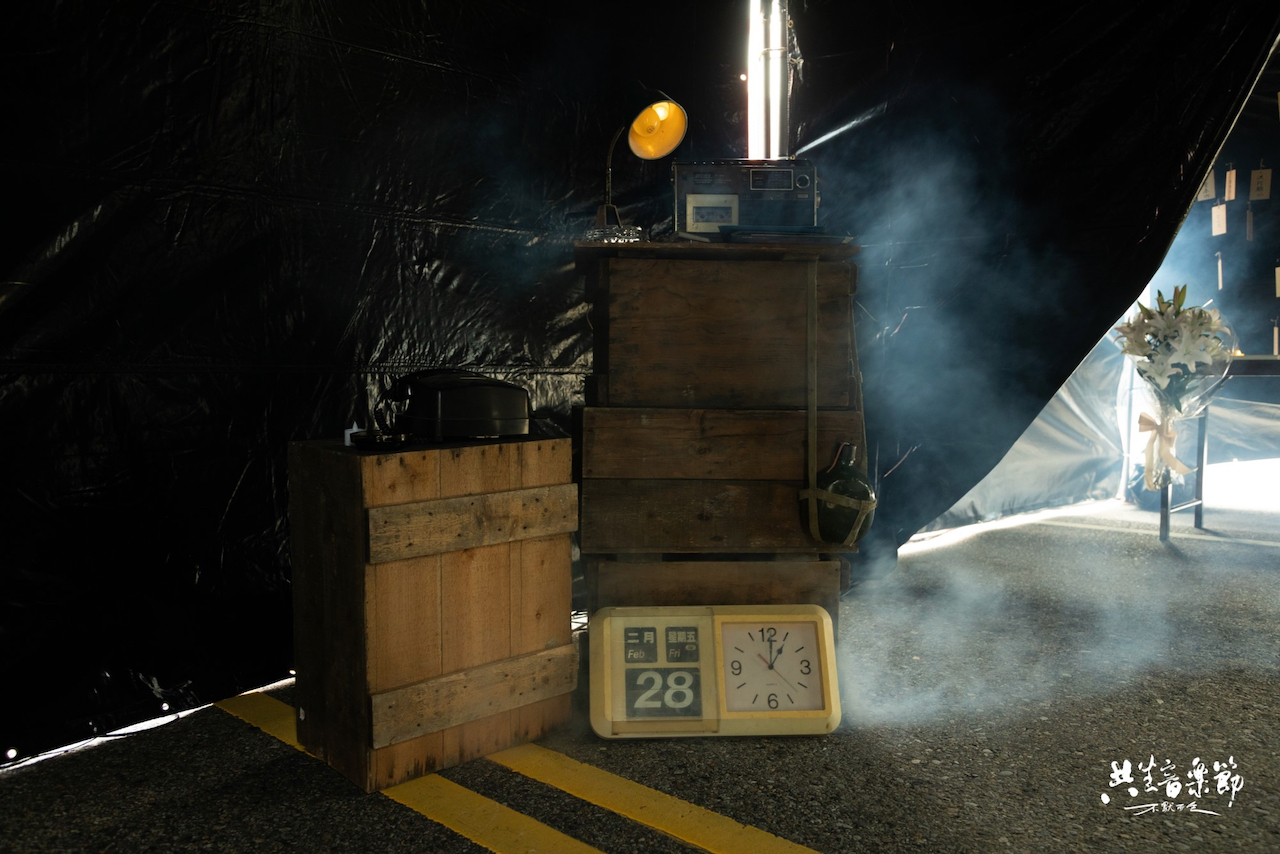
你走進、你失去清晰的視線、你聽、你依稀看見。對於過去歷史的「不在場」正凸顯了我們對於現下的「在場」。透過某些歷史的真實考據、藝術的創造變幻,我們或許可以盡其所能的企及過往的土地記憶。
畢竟土地記憶從來不會完全散逸,而是以多種形式悄悄地一路影響著,從土地長出來的人事物。
除此之外還有「身體感」。第八屆團隊設計開發的實境遊戲「落筆之春」,讓玩家在遊戲過程中,不但置身於二二八中面對威權依舊「寧鳴而死,不默而生」的人物經歷,同時實際走訪曾劃出歷史傷痕的地點,原來光是日常途經的許多景點,就能細細感受歷史的隱隱蒸騰出的氣息和密語。
音樂節當天更出現「電流急急棒」和「戳戳樂」的別具意義小企劃:有別於一般的電流急急棒,在音樂節現場象徵的是威權時代的可怖氛圍與動輒得咎,就算體驗者很厲害的度過各種蜿蜒,仍會不知情地在即將抵達終點時,面臨工作人員悄悄按下震動機關的命運――威權時代再怎麼默不作聲、對不合理的待遇百依百順,許多人仍難逃被逮捕甚至無辜慘死的際遇。在音樂節現場及周遭遊走的巨大戳戳樂箱子,則是由戳戳樂的格子組成臺灣形狀,企劃名稱裡的「樂」只是拉近大眾與自身歷史的媒介,實則引導大眾嚴肅、沉痛地重拾歷史記憶――在這樣的日子裡,每個格子裡都有臺灣不同地區的傷痕故事,戳開洞口就像是掘出1947年之際,二二八事件在各地的迸發經過,戳破的洞無法復原,也像是這段歷史的人事物在這塊土地留下了無可抹滅的傷疤,可是或許藉由閱讀洞口裡的故事紙條,人們能夠更瞭解過往的種種,接續找尋盡可能癒合的方式,而顯露在紙箱上的洞口,正提醒人們二二八事件及其後的未癒傷口,仍舊深邃、仍舊無聲地淌血,有待人們看見並好好地處理傷痛;而參與戳戳樂的大眾,也可寫下讀過紙條的反思、心情,將新的紙條覆上裸露的洞口,這樣的黏貼則象徵臺灣正處於慢慢走出部分傷痛、緩緩修復部分裂痕的過程,儘管困難重重,我們仍要惦記著過去、同時步向未來。
 別於一般的電流急急棒,在「共生音樂節」現場象徵的是威權時代的可怖氛圍與動輒得咎。圖/台灣共生青年協會提供
別於一般的電流急急棒,在「共生音樂節」現場象徵的是威權時代的可怖氛圍與動輒得咎。圖/台灣共生青年協會提供
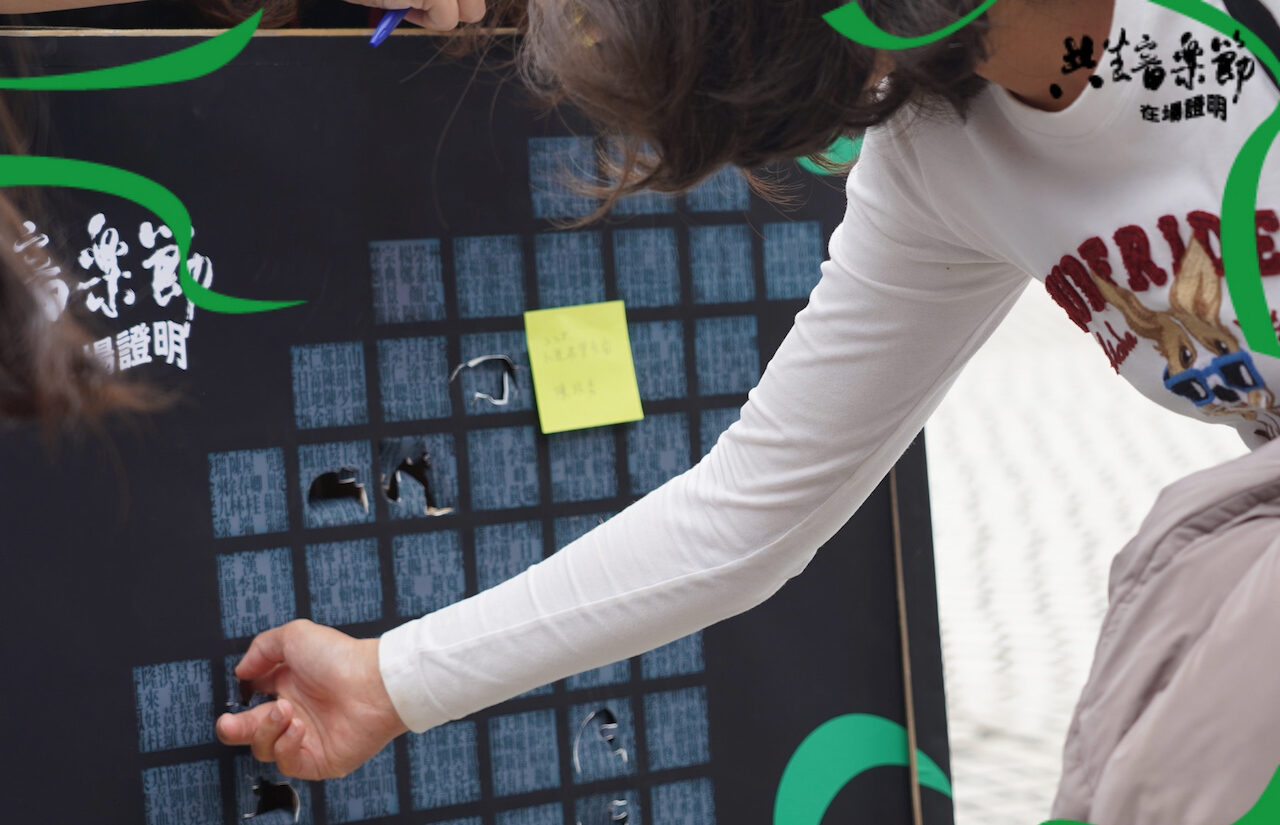 戳戳樂企劃名稱裡的「樂」只是拉近大眾與自身歷史的媒介,實則引導大眾嚴肅、沉痛地重拾歷史記憶。圖/台灣共生青年協會提供
戳戳樂企劃名稱裡的「樂」只是拉近大眾與自身歷史的媒介,實則引導大眾嚴肅、沉痛地重拾歷史記憶。圖/台灣共生青年協會提供
與身體力行相關、不可忽視的,還有從2015年起,每年都會成為音樂節重要環節之一的「狼煙行動」。
「當原住民看見狼煙升起,就知道祖靈可以接收到我們的訊息。火堆象徵著生命,而從火堆升起的狼煙,就是原住民信仰的印記。」你看見原住民青年陣線的夥伴、其他現場的原住民族及各種群體,在此際用身軀圍起橫跨三線道之寬的大圓,圓圈中央有一盆火、一堆青綠的芒草結,你聽到狼煙是宣布訊息、串連集結的溝通媒介:「狼煙行動就是原住民族要在我們固有的文化和歷史當中,去向未來發聲的一場行動。」然後原住民朋友向前率先將芒草置入火堆,小心翼翼地燒出白煙。要燒出足量且顯見的狼煙,可不是隨意燒就燒得出來的。
接著你和其餘願意理解或認同原住民夥伴的參與者們,從圓周上聚攏到圓心,也將代表著承諾和標示的芒草結放入火堆,表示願意站在同一陣線、爭取生而為人不該被恣意剝奪的權利。圓周再度從稀薄變回厚實,在嘹亮的原住民歌聲中,這個不分族群的圓旋轉起來,自圓心裊裊翳入蒼穹的狼煙,是祖靈正聆聽著後代的傾訴。
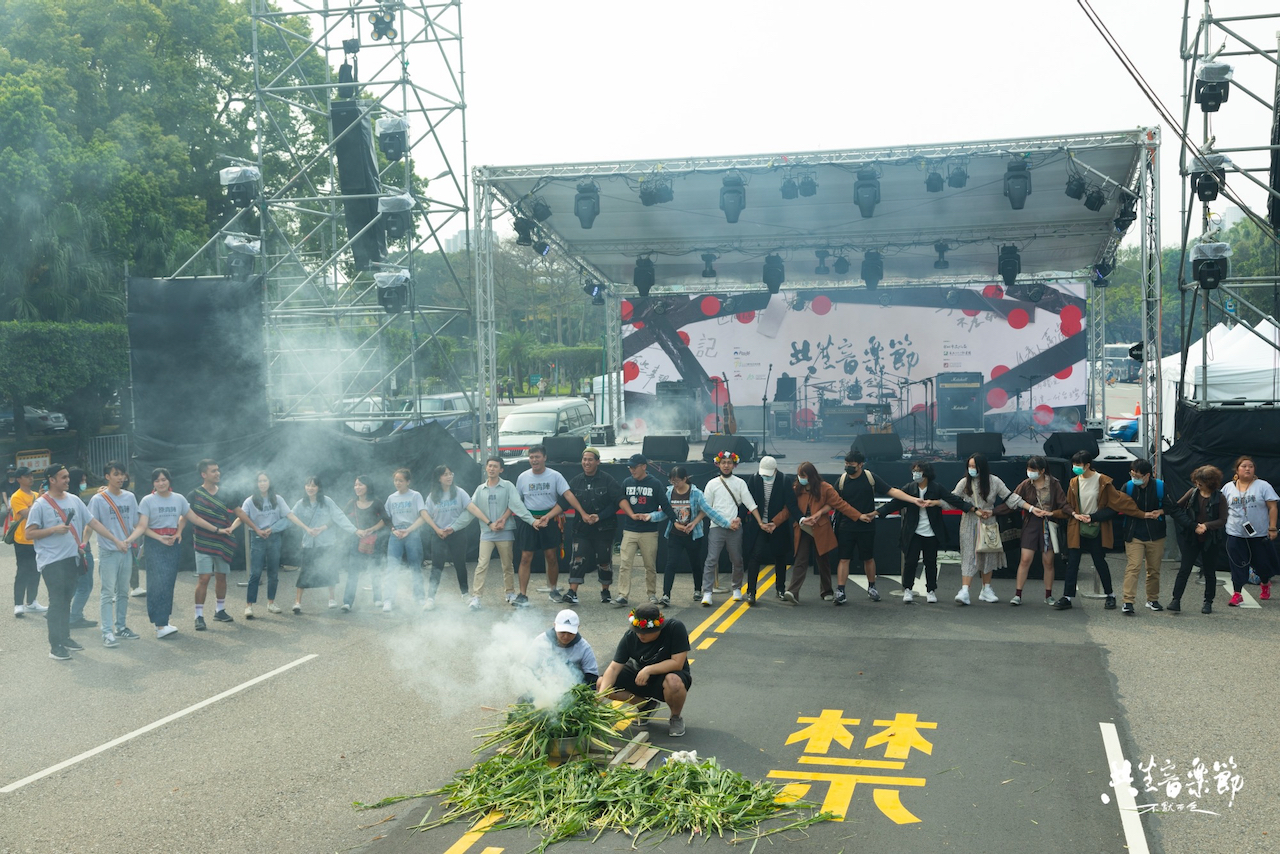 自2015年起,每年的「共生音樂節」都會有的重要環節之一「狼煙行動」,是原住民族要在固有的文化和歷史當中,去向未來發聲的一場行動。圖/台灣共生青年協會提供
自2015年起,每年的「共生音樂節」都會有的重要環節之一「狼煙行動」,是原住民族要在固有的文化和歷史當中,去向未來發聲的一場行動。圖/台灣共生青年協會提供
發生在臺灣的二二八事件是立體而多面的,接續的白色恐怖亦是。儘管現今我們無法直接穿梭回七十多年前,可是威權遺緒等影響仍流淌於我們的血脈中,於是我們都是在場的見證者。族群與歷史脈絡繁複的臺灣,距離真正達成「共生」或許尚有漫漫長路,至少時至今日,臺灣仍有一群人奮力邁開步伐――無論你我是受到聽覺、視覺、身體感,或者歷史記憶的深刻觸動,我們在這裡。